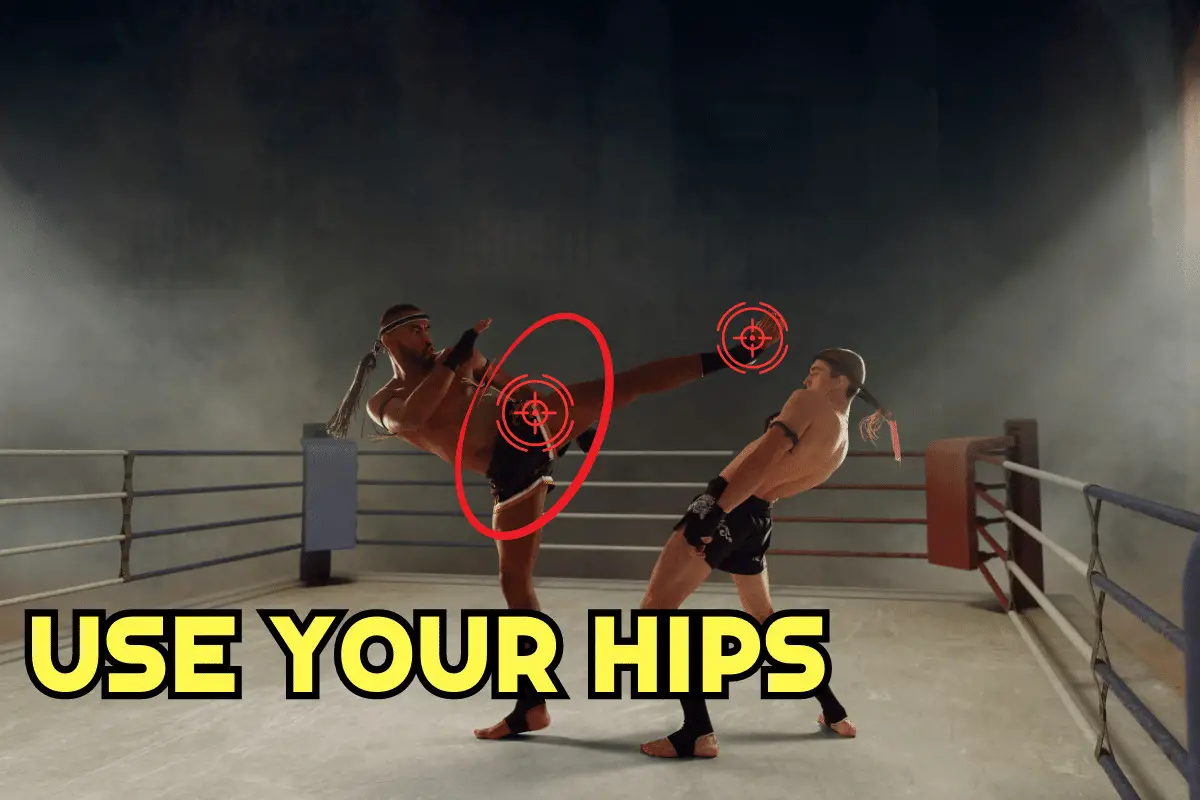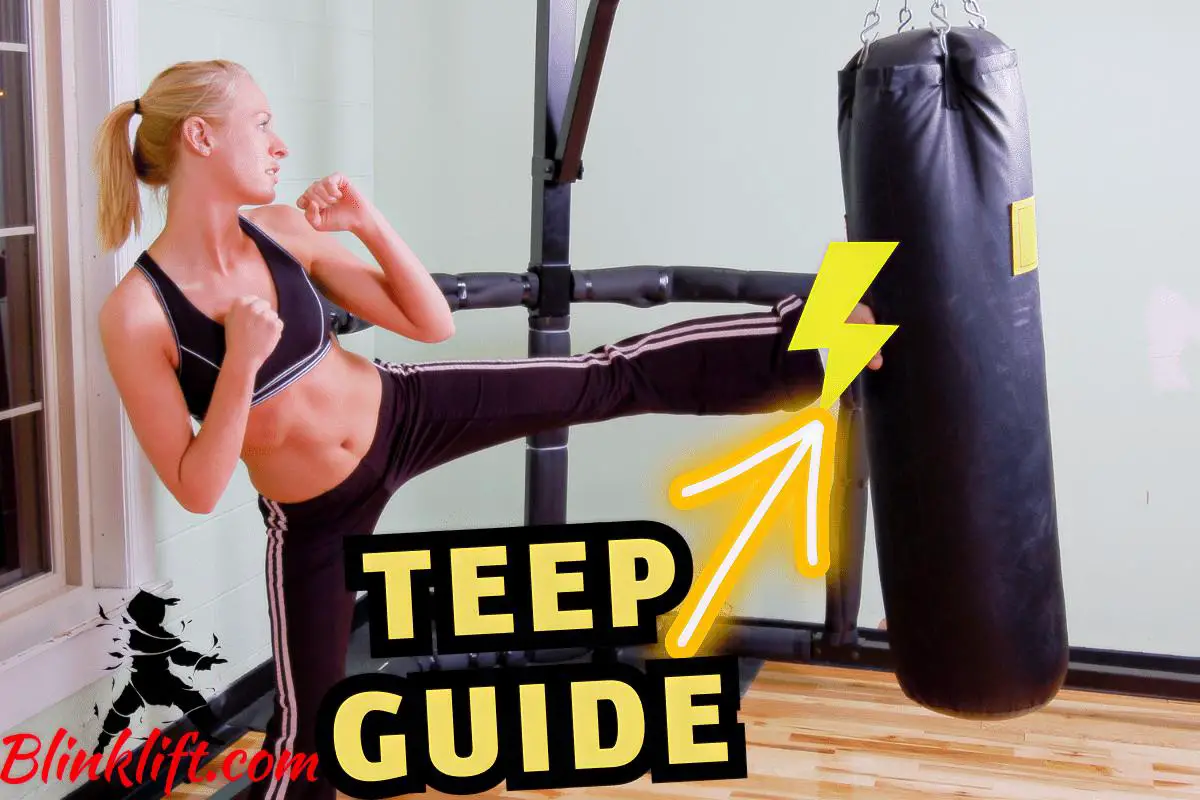Hello there. Welcome to a complete guide about the Teep. If you don’t know, the Teep is one of the most influential kicks in Muay Thai. By the way, it’s also known as the Push Kick. Regardless of how you call it, you’ll be able to use it to control your opponent while causing significant damage.
In Muay Thai, the term “Teep” refers to a front kick or push kick. It is one of the fundamental techniques used in the sport. The Teep is performed by extending the lead leg and pushing the ball of the foot forward to strike the opponent’s body or face.
The Teep is versatile and has several purposes in Muay Thai. It can be used for offensive and defensive purposes, as well as for creating distance between you and your opponent.
Indeed, it serves a few purposes. The primary one is to push the opponent back and create distance. This is fantastic for combining other offensive techniques and creating attacking sequences.
Furthermore, you can also choose to hit your opponent’s head, which will cause significant damage and allow you to control the fight. You can, as you can imagine, achieve both with the same kick.
So now, let’s dive into the first section of this article. This section is perhaps the most important in this entire article, so I encourage you to pay close attention.
How to Teep in Muay Thai
The first part of this article will break down the six steps to throwing a perfect Push Kick. You must pay close attention here since it’s more than critical that you understand all of them. If you won’t, you’ll definitely miss out on some great opportunities.
The more you’re able to implement and follow the steps, the more power, speed, and overall effectiveness you’ll have with the Push Kick. I believe it’s one of the most important strikes in the world of Muay Thai, so you should definitely follow along.
In parts #2 and #3, we’ll cover important subjects as well. For part #2, we’ll review some of the best combinations you can start throwing now that you know the Teep. In part #3, we’ll review variations you can continue learning to become a more effective fighter. You can follow the links to skip through to them.
Anyways, let’s dive into step #1.
#1 – Stand in a balanced stance
The first step is, believe it or not, how you stand. Indeed, your fighting stance greatly influences how much power and speed you’ll be able to generate with your Push Kick. Therefore, you must work on it before you dive into the more advanced steps or combinations/variations.
Regardless, I encourage you to bookmark this article so you can return to it whenever you just want. That way, you won’t forget any steps and will be able to constantly improve. So if you’re serious about your training, bookmark this article.
Moving on, begin by assuming a proper Muay Thai stance. Stand with your feet shoulder-width apart, one foot slightly ahead of the other. Keep your knees slightly bent and your weight evenly distributed.
I did write an entire article on how to perfect your Muay Thai fighting stance, which you can read by following this link. I believe that everyone can benefit from reading this article, whether you’re a beginner or an advanced disciple.

#2 – Raise your knee
The second step is to raise your knee. The knee you want to raise, just to be clear, is of the kicking leg.
Lift the knee of your lead leg (the leg closest to your opponent). The knee should be lifted towards your chest or midsection, keeping your foot relaxed.
This step is critical to generating more power with your kicks. Not only will you be able to make this kick a bit simpler, but you’ll also be capable of generating more force.
Many Muay Thai fighters skip this step. So in the end, they aren’t able to generate a lot of force because they don’t have a lot of leverage. However, if you raise your knee before extending your leg, you’ll have much more leverage to work with.

#3 – Extend your leg
From the raised knee position, extend your leg forward explosively. Straighten your leg as you push the ball of your foot outward, aiming to strike your target with the bottom of your foot. The leg extension should be swift and powerful.
Indeed, as you can see, we broke down raising the knee and extending the leg. So pay close attention now, as I’m about to reveal one of the most important things you want to know about the Teep.
It’s critical that you break down the raise and the extension. However, you also want to practice as you fight. Therefore, when you practice on the heavy bag, you must break down the technique as well.
So although you might want to go all-in on the heavy bag and start seeing results, it’ll be worth waiting a bit and slowing down your pace. If you can do that, you’ll have a much easier time getting the hang of it.
#4 – Engage your hip and torso
The #1 mistake Muay Thai fighters make is not using their lower body to its full potential. It can be quite easy to throw a punch. However, it takes tons of practice to throw a really good punch.
The reason for that is you need to use your hips, legs, shoulders, torso, and feet to generate more power. Thus, it’ll be difficult to use all of them together. But it’s the only to achieve substantial damage with your strikes. The same applies to the Push Kick.
As you extend your leg, engage your hip and torso to generate additional power. Rotate your hip slightly forward and twist your torso to add force to the kick.
And remember, this has to be the primary mistake Muay Thai fighters make with strikes in general.

#5 – Aim and strike the target
The next step is to select your target. Of course, the target is your opponent. However, you want to choose more specific body parts and aim your Teep at them.
Determine your target before executing the teep. You can target the opponent’s body, particularly the abdomen, chest, or thighs. For self-defense purposes, the teep can also target the opponent’s face. Aim to make contact with the ball of your foot, rather than the toes.
Target selection is key to hitting your opponent where it hurts the most. Without determining your target beforehand, you’ll find it extremely difficult to hit effectively.
#6 – Recoil and return to your stance
The last step of the Teep is returning to normal. This also applies to when you want to continue to a combination, as you first want to return to your fighting stance, even if only for a millisecond.
Muay Thai fighters tend to forget about defense. However, what if you were to throw a Teep and miss? Would you want your opponent to close the distance you created and start attacking? Let’s say that was the case, you would want to have your guard up when it happens, which isn’t implausible.
After the teep, swiftly retract your leg back to its original position. Ensure a smooth and controlled recoil to maintain balance and readiness for subsequent movements. Return to your Muay Thai stance, ready to defend or launch further attacks.
So now, you know everything you need to know about the Teep. Now, I want you to implement everything you’ve learned here thus far. Without implementation in real-time, you’ll have no shot at perfecting your Push Kick, which should be your goal.
Now that you know to execute a fierce Teep, it’s time we move on to the second part of this article: combinations!
Teep Combinations (Muay Thai)
Combinations in Muay Thai are critical to know and understand. Imagine you were only able to throw a single punch or kick at a time. How much damage would you really be able to cause? I’m confident the answer is not a lot.
Therefore, fighters began constructing sequences where they used more than a single fighting technique to cause much more damage to their opponents—all that while doing so more quickly.
Thus, without further ado, let’s dive into some of the best combinations in Muay Thai that include the Teep.
- Jab-Cross-Teep: This combination starts with a quick jab (lead hand) followed by a powerful cross (rear hand). As your rear hand retracts, immediately transition into a Teep with your lead leg, aiming for your opponent’s midsection or pushing them away.
- Hook-Cross-Teep: Begin with a left hook (lead hand) to the side of your opponent’s head, followed by a strong right cross (rear hand). After the cross, execute a Teep with your lead leg, targeting the body or creating distance.
- Teep-Cross–Hook: Start by initiating a Teep with your lead leg, forcing your opponent to step back or lose balance. As they recover, quickly follow up with a strong right cross (rear hand) and finish with a left hook (lead hand) to capitalize on the opening.
- Teep-Low Kick: Utilize the Teep to disrupt your opponent’s balance or push them backward. Immediately after the Teep, transition into a low kick with your rear leg, targeting their lead leg or body.
- Teep-Switch Kick: Execute a Teep with your lead leg to create space or keep your opponent at bay. After the Teep, swiftly switch your stance, leading with your opposite leg, and deliver a powerful switch kick to your opponent’s body or head.
- Teep-Overhand Right: Employ a Teep with your lead leg to either push your opponent away or set up the next strike. Follow the Teep with a powerful overhand right punch, aiming to land on your opponent’s head or jaw.
Teep (Push Kick) Variations
Knowing and striving to learn more is beneficial in 99% of instances. Not only will you be more confident in your skills, but you’ll also become a much more versatile fighter. You’ll understand how to diversify your fighting skills according to the particular opponent you’re facing.
So before we dive into the variations of the Push Kick you want to know about, I want you to understand how critical knowing more is. You’ll become a much more capable fighter and one who knows to diversify his skills and adapt to different opponents. Frankly, it’s one of the most important skills you can work on.
In Muay Thai, there are several variations of the Teep (push kick) that can be utilized. Here are some common Teep variations:
- Teep to the Body: This is the standard teep technique where you extend your lead leg and push the ball of your foot into your opponent’s midsection. It aims to disrupt their balance, create distance, or score points in a fight.
- Teep to the Face: Similar to the Teep to the body, the target is your opponent’s face. This variation requires good accuracy and timing. It can be used as a defensive tool to keep your opponent at bay or as an offensive strike to surprise them.
- Teep to the Leg: Instead of targeting the upper body, this variation aims to strike your opponent’s thigh or lower leg. It can be used to disrupt their balance, weaken their leg, or counter their low kicks. The Teep to the leg can also be combined with a low kick in a fluid motion.
- Teep to the Knee: This technique involves extending your lead leg and aiming to strike your opponent’s knee joint. It is an advanced technique used to damage the knee or prevent your opponent from closing the distance effectively. Caution should be exercised with this technique to avoid causing serious injury.
- Double Teep: This involves executing two consecutive Teeps, either to the same target or to different targets. For example, you can start with a Teep to the body and quickly follow up with a teep to the face or vice versa. The double Teep can be an effective way to keep your opponent off balance or set up other strikes.
- Angle Teep: Instead of teeping directly forward, you can angle your Teep to the side. For example, you can teep diagonally to the opponent’s side, aiming for the ribs or hip area. This variation can surprise your opponent and create openings for follow-up strikes.
Final Words
This is everything you need to know about the Teep, aka Push Kick, in Muay Thai. This kick serves many purposes, but the primary ones are to push the opponent and knock him off his balance.
If you can achieve one of these purposes, you’ll become a much more competent Muay Thai fighter, capable of controlling his opponents better.
The Push Kick isn’t the only kick you want to know about; follow this link to learn about the best kicks in Muay Thai you want to know about.
Here are other articles you’d enjoy reading:

